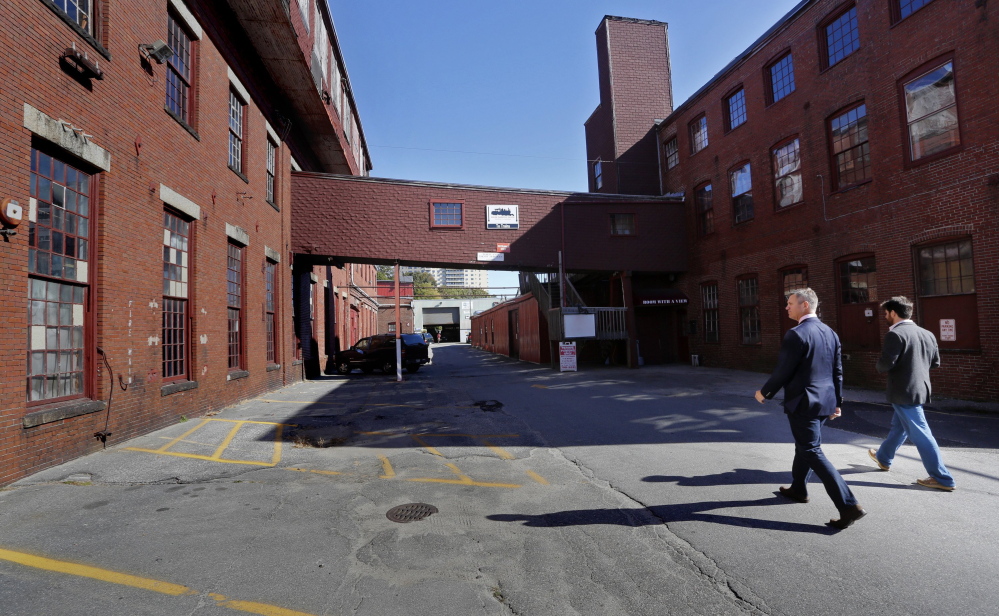Every city in America wishes it could have an Old Port. The restaurant and shopping district combines repurposed historic buildings with sensitive new construction to provide a place for year-round day and night economic activity, a celebration of the city’s past, present and future.
Not every city gets one Old Port. Portland could end up with two.
The Portland Co. property on the Eastern Waterfront is that opportunity. The entire Old Port would fit inside its 10 acres. With 1,000 feet of ocean frontage, it offers unparalleled views of the city’s busy harbor. Historic brick buildings tell the story of Portland’s past as a rail-to-sail transportation hub, where locomotives were built to move grain from western Canada onto ships bound for Europe.
And tucked into the city’s East End, the hottest real estate market in the state, this development could turn vacant industrial land into a place for people to live, work and visit, producing tax revenue and enhancing civic pride.
The proposed development has the same opportunity to set the pace for the next century of Portland’s economy that the original Portland Co. did, but the developers are going to have to clear some hurdles that did not exist when the seaside foundry and railyard were first laid out in the 1840s.
One is the city’s Historic Preservation Board, which is considering a request to put the entire property into a historical preservation zone. Built in stages between the mid-19th century and the mid-20th century, the buildings tell the story of a business that grew and adapted over time – an industrial evolution that played a key role in the city’s history.
That is definitely a story that should be preserved, but not at any cost. Some buildings on the site are suffering from decades of neglect and would require millions of dollars’ worth of investment returning very little benefit.
And the original developer did not have to contend with neighboring property owners concerned about their views, but the Portland Co. developers do.
The property was left out of the mixed-use zone that governs development along the rest of the Eastern Waterfront, at the request of then-owner Phineas Sprague. The developers have proposed making the property conform to the neighborhood’s zone, prompting concern that the rezoned site’s height limits would allow construction that blocks parts of some residents’ views.
The neighbors’ concerns are understandable, but it would be a shame if they stop or severely limit the development of this site. The waterfront is not the best place for tall buildings, but the dimensions of this property, which drops steeply in elevation along its north boundary, mean that a six-story building would hardly poke up over the Eastern Promenade curb line.
The site’s neighbors should be willing to work with the site’s developers. No one owns a view. There are ways to maintain the public’s access to the waterfront without outlawing development on a scale that is commercially viable.
The Portland Co. site is a tremendous opportunity for the city, but it’s also a test of the ability of people here to work together. If the public, private and nonprofit sectors of the city’s economy can cooperate, Portland has an opportunity to build a second Old Port. If they can’t, it will be a lost opportunity that the city will regret for a long time.
Send questions/comments to the editors.



Success. Please wait for the page to reload. If the page does not reload within 5 seconds, please refresh the page.
Enter your email and password to access comments.
Hi, to comment on stories you must . This profile is in addition to your subscription and website login.
Already have a commenting profile? .
Invalid username/password.
Please check your email to confirm and complete your registration.
Only subscribers are eligible to post comments. Please subscribe or login first for digital access. Here’s why.
Use the form below to reset your password. When you've submitted your account email, we will send an email with a reset code.